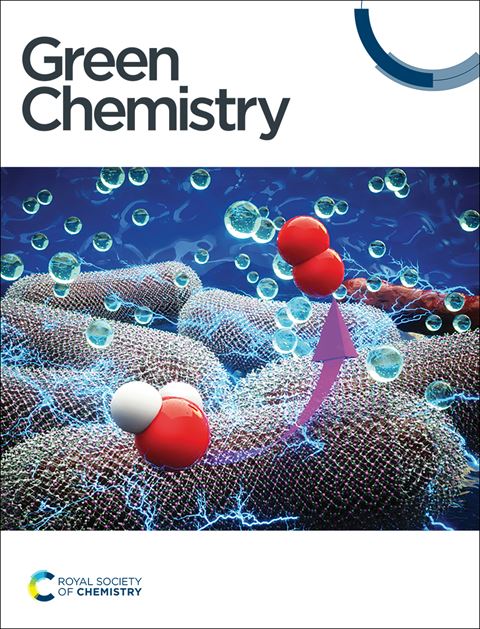Industrial ultra-low-carbon methanol synthesis routes: techno-economic analysis, life cycle environment assessment and multi-dimensional sustainability evaluation†
IF 9.3
1区 化学
Q1 CHEMISTRY, MULTIDISCIPLINARY
引用次数: 0
Abstract
This study establishes the industrial green hydrogen-coupled coal-to-methanol (GH2-CTM) process and the biomass-to-methanol (BTM) process from the perspectives of process coupling and raw material greening. A comprehensive comparison of the two low-carbon methanol synthesis routes was conducted, aiming to promote environmentally friendly and efficient methanol production, based on detailed process modeling and simulation results. Techno-economic and life cycle assessments were performed on these low-carbon methanol processes as well as the conventional coal-to-methanol (CTM) process, and a multi-dimensional feasibility analysis was performed on key parameters (such as green hydrogen coupling amount, green hydrogen price, carbon tax, and biomass policy subsidies). The findings revealed that the industrialized GH2-CTM process exhibited a 16.2% increase in methanol production and a 16.5% reduction in energy consumption. As the cost of green hydrogen decreases to 10.52 CNY kg−1, renewable energy electrolysis hydrogen production could potentially replace the water-gas shift unit, leading to a 46.4% increase in methanol production and approximately 62.5% and 55.0% reductions in GHG emission and NED consumption compared to the CTM process. Government subsidies for straw-based energy production resulted in comparable economic performance between the BTM process and the CTM process. The BTM process demonstrated significant reductions in GHG emission and NED consumption of approximately 62.1% and 41.2%, respectively. These findings can ensure the realization of genuine ultra-low-carbon methanol production under the premise of determining the industrial scale and provide guidance for the more sustainable and environmentally friendly transformation of large coal-based methanol plants in China.

求助全文
约1分钟内获得全文
求助全文
来源期刊

Green Chemistry
化学-化学综合
CiteScore
16.10
自引率
7.10%
发文量
677
审稿时长
1.4 months
期刊介绍:
Green Chemistry is a journal that provides a unique forum for the publication of innovative research on the development of alternative green and sustainable technologies. The scope of Green Chemistry is based on the definition proposed by Anastas and Warner (Green Chemistry: Theory and Practice, P T Anastas and J C Warner, Oxford University Press, Oxford, 1998), which defines green chemistry as the utilisation of a set of principles that reduces or eliminates the use or generation of hazardous substances in the design, manufacture and application of chemical products. Green Chemistry aims to reduce the environmental impact of the chemical enterprise by developing a technology base that is inherently non-toxic to living things and the environment. The journal welcomes submissions on all aspects of research relating to this endeavor and publishes original and significant cutting-edge research that is likely to be of wide general appeal. For a work to be published, it must present a significant advance in green chemistry, including a comparison with existing methods and a demonstration of advantages over those methods.
 求助内容:
求助内容: 应助结果提醒方式:
应助结果提醒方式:


